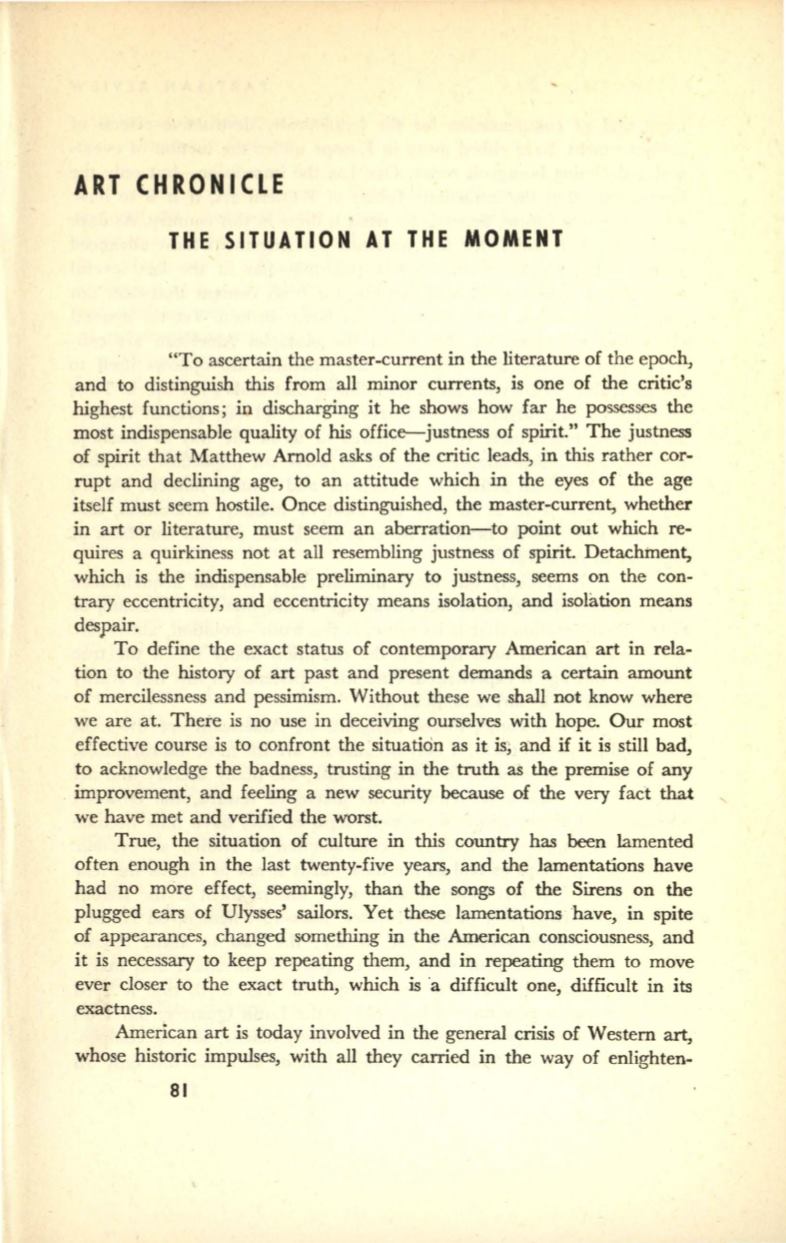
ART CHRONICLE
THE SITUATION AT THE MOMENT
"To ascertain the master-current in the literature of the epoch,
and to distinguish this from all minor currents, is one of the critic's
highest functions; in discharging it he shows how far he possesses the
most indispensable quality of
his
office-justness of spirit." The justness
of spirit that Matthew Arnold asks of the critic leads, in this rather cor–
rupt and declining age, to an attitude which in the eyes of the age
itself must seem hostile. Once distinguished, the master-current, whether
in art or literature, must seem an aberration-to point out which re–
quires a quirkiness not at all resembling justness of spirit. Detachment,
which is the indispensable preliminary to justness, seems on the con–
trary eccentricity, and eccentricity means isolation, and isolation means
despair.
To define the exact status of contemporary American art in rela–
tion to the history of art past and present demands a certain amount
of mercilessness and pessimism. Without these we shall not know where
we are at. There is no use in deceiving ourselves with hope. Our most
effective course is to confront the situation as it is; and if it is still bad,
to acknowledge the badness, trusting in the truth as the premise of any
improvement, and feeling a new security because of the very fact
that
we have met and verified the worst.
True, the situation of culture in this country has been lamented
often enough in the last twenty-five years, and the lamentations have
had no more effect, seemingly, than the songs of the Sirens on the
plugged ears of Ulysses' sailors. Yet these lamentations have, in spite
of appearances, changed something in the American consciousness, and
it is necessary to keep repeating them, and in repeating them to move
ever closer to the exact truth, which is ·a difficult one, difficult in its
exactness.
American art is today involved in the general crisis of Western
art,
whose historic impulses, with all they carried in the way of enlighten-
SI


